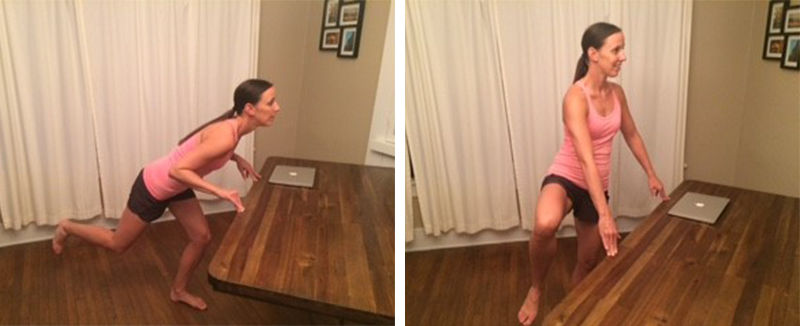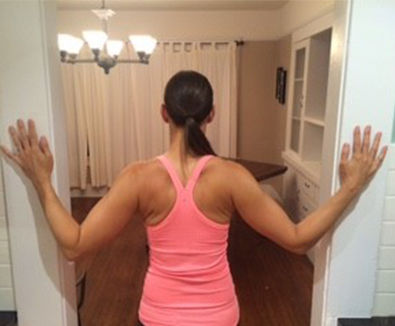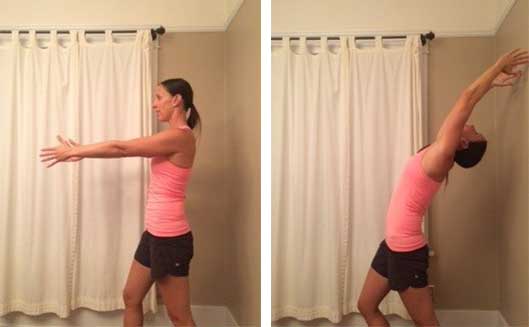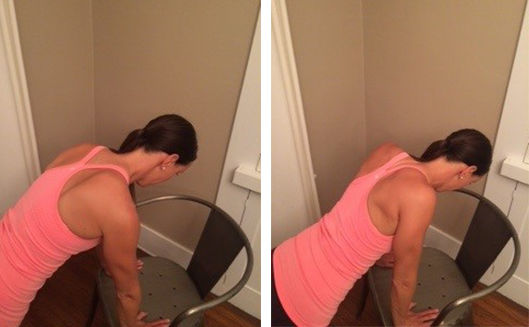I teach at a community college in San Diego, 15 minutes from Tijuana, Mexico. Many students live in Tijuana and cross the border every morning to attend college. The border wait is grueling, sometimes up to two hours. The students then spend a full day at school and return back home to study and work. On average they are spending 75 percent of their waking hours sitting down.
What’s your day like? How long is your commute? How do you spend your workday? What do you do once you get home? Add up those hours and see how you compare.
The research is clear on the dangers of sitting for too long:
- Enzymes that help you burn fat shut down.
- Cholesterol metabolism slows down, increasing your risk of coronary artery disease.
- Glucose that is not being utilized for energy is turned into fatty acids, thus increasing your risk for diabetes.
- The lumbar spine is compressed because the hips are flexed. Glutes are underutilized and the thoracic spine (mid back) and cervical spine (neck) tend to flex, leading to a hunched back and protruding neck. As you read this, don’t move and assess your posture. Are you in this position?
The British Journal of Sports Medicine recently created the following guidelines to help you achieve two to four hours of standing or light activity during the day: for every 30 minutes of seated work, sit for 20 of those, stand for eight and move and stretch for two.
Here are four exercises that you can do during the two minutes of “moving and stretching.” These exercises will engage the muscles that are weak and stretch the ones that are tight. Perform them slowly; you’ll probably complete 12 to 15 repetitions in one minute.
1. Single-leg squat with hip rotation

This exercise strengthens the glutes and increases mobility in the hips. Stand on your left leg with your hands on the desk in front of you. As you sit down into your left hip, push your right leg back. As you start to stand up, pull the right leg up to the midline of the body, and slowly draw a circle with your right hip, rotating it out and around. As the right leg moves in a circle, try to prevent the left hip from pulling to the right. Complete the movement for one minute and then do another minute on the opposite side.
2. Doorway stretch with leg swing

In addition to stretching the chest and strengthening the back, this exercise also works the legs and core. Stand in between a doorway with your arms at 90 degrees. Lean slightly forward to feel your chest expand and then pull your arms down an inch. You should feel your shoulder blades coming toward each other. While holding this posture, adjust your hips and legs so that your ankles, knees and hips are aligned. Maintain a neutral pelvis, draw your belly button in and brace your abdominal muscles as you lift your right leg off the floor. With control and stability through your pelvis, pull your leg forward and back, squeezing the glute as you extend the hip. Complete the movement for one minute, shake your arms out and repeat on the opposite side.
3. Standing spine extension

This movement allows the hip flexors to open up while bringing the mid and upper back into extension. Place your left foot three to five inches away from a wall. Stagger your right foot a few inches in front of the left and slightly bend your right knee. Stand tall and start to tuck your tailbone under. This should begin to open up the hip flexor on the left side. As you continue to push your hips forward, draw your arms up and overhead. Create a curve in your mid back as your arms reach back to the wall behind you. Allow your gaze to follow your arms throughout the entire range of motion. Complete the movement for one minute and then switch the position of the legs and repeat.
4. Scapular push-ups

This exercise increases the strength of the rhomboids, which are the muscles of the scapula. When the scapula retracts, or comes together, the upper back tightens and the chest expands. This exercise can be done on something steady, such as a desk or chair. Place your hands shoulder-width apart. In the starting position, your shoulder blades will be apart. While keeping your elbows straight, slowly squeeze your shoulder blades together, as if you were trying to hold a pencil between them. Hold for a second and then pull the shoulder blades apart. Perform 12-15 repetitions. The challenging part of this exercise is to NOT bend your elbows, like you would during a chest push-up.
Utilizing these movements improves your posture and can alleviate the negative effects of sitting. Remember to be mindful of the amount of time you spend seated and aim to achieve 20 minutes of sitting, eight minutes of standing, and two minutes of moving and/or stretching.




 by
by 









